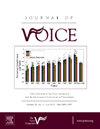“Quality, Readability, and Understandability of Online Posterior Glottic Stenosis Information”
IF 2.5
4区 医学
Q1 AUDIOLOGY & SPEECH-LANGUAGE PATHOLOGY
引用次数: 0
Abstract
Objectives
To assess the quality, readability, and understandability of posterior glottic stenosis (PGS) information available to patients online.
Methods
The top 50 Google search results for “posterior glottic stenosis” were categorized based on website affiliation and target audience (patient or provider). Readability was assessed using the Flesch-Kincaid Grade Level (FKGL) and the Flesch Reading Ease (FRE) scores. The DISCERN tool was used to assess quality and the Patient Education Assessment Tool for Printed Materials (PEMAT-P) was used to assess understandability and actionability. Simple descriptive statistics were used to analyze the data.
Results
36 of the top 50 results were eligible for scoring. 17% (6 of 36) were classified as patient-focused while 83% (30 of 36) were provider-focused. Patient-focused materials had a higher mean FRE score (36.9) than provider-focused materials (15.5) (P < 0.001). Patient-focused materials had an average reading level of 12.5 compared to 15.8 for provider-focused materials (P < 0.001). There was a significant correlation between overall PEMAT-P and DISCERN (r = 0.63, P < 0.001), PEMAT-P understandability and DISCERN (r = 0.63, P < 0.001) and FRES and FKGL (r = -0.67, P < 0.001). From this, we can infer that higher quality sites are easier to understand but not necessarily tailored to a certain reading level.
Conclusions
Shared decision making in PGS management is crucial as patients must be aware of how treatment modalities affect airway, voice, and swallowing. However, this study shows that patient targeted PGS information is limited, and the readability, quality, and understandability is generally low. We suggest the development of web pages with PGS information tailored for patient education and search optimization to make this information appear earlier in Google search results. Furthermore, future studies should seek to characterize the link between online health information and socioeconomic-based health disparities.
"在线声门后狭窄信息的质量、可读性和可理解性"。
目的评估向患者提供的声门后狭窄(PGS)在线信息的质量、可读性和可理解性:根据网站所属和目标受众(患者或医疗服务提供者)对谷歌搜索结果前 50 名的 "声门后狭窄 "进行分类。使用弗莱什-金凯德等级评分(FKGL)和弗莱什阅读容易度评分(FRE)评估可读性。DISCERN 工具用于评估质量,印刷材料患者教育评估工具 (PEMAT-P) 用于评估可理解性和可操作性。数据分析采用了简单的描述性统计方法:前 50 项结果中有 36 项符合评分条件。17%(36 项中的 6 项)被归类为以患者为中心,而 83%(36 项中的 30 项)则以提供者为中心。以患者为重点的材料的平均 FRE 分数(36.9)高于以提供者为重点的材料(15.5)(P < 0.001)。以患者为重点的材料的平均阅读水平为 12.5,而以提供者为重点的材料的平均阅读水平为 15.8(P < 0.001)。总体 PEMAT-P 和 DISCERN(r = 0.63,P < 0.001)、PEMAT-P 可理解性和 DISCERN(r = 0.63,P < 0.001)以及 FRES 和 FKGL(r = -0.67,P < 0.001)之间存在明显的相关性。由此我们可以推断,质量较高的网站更容易理解,但并不一定适合特定的阅读水平:PGS管理中的共同决策至关重要,因为患者必须了解治疗方式对气道、嗓音和吞咽的影响。然而,本研究表明,针对患者的 PGS 信息有限,可读性、质量和可理解性普遍较低。我们建议开发针对患者教育的 PGS 信息网页,并进行搜索优化,使这些信息更早地出现在谷歌搜索结果中。此外,未来的研究应寻求在线健康信息与基于社会经济的健康差异之间的联系。
本文章由计算机程序翻译,如有差异,请以英文原文为准。
求助全文
约1分钟内获得全文
求助全文
来源期刊

Journal of Voice
医学-耳鼻喉科学
CiteScore
4.00
自引率
13.60%
发文量
395
审稿时长
59 days
期刊介绍:
The Journal of Voice is widely regarded as the world''s premiere journal for voice medicine and research. This peer-reviewed publication is listed in Index Medicus and is indexed by the Institute for Scientific Information. The journal contains articles written by experts throughout the world on all topics in voice sciences, voice medicine and surgery, and speech-language pathologists'' management of voice-related problems. The journal includes clinical articles, clinical research, and laboratory research. Members of the Foundation receive the journal as a benefit of membership.
 求助内容:
求助内容: 应助结果提醒方式:
应助结果提醒方式:


